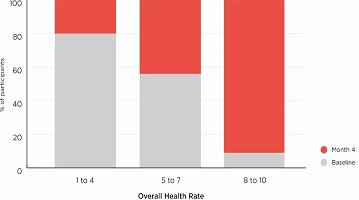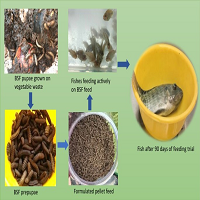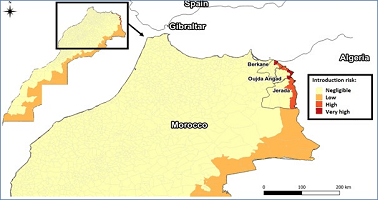INTRODUCTION
A physically active (PA) lifestyle during childhood has been positively correlated to lifelong engagement and as such is acknowledged to support health benefits including maintenance of body weight, improved mental and social health including reduced levels of depression, anxiety and improved self-esteem.1 Furthermore, PA promotion for children is seen as an influential factor in reducing the risk of developing cardiovascular disease, obesity, cancer, diabetes and osteoporosis.2 However, there is mounting worry that children are not participating in enough PA, increasing their risks of not only sedentary behavior but inevitably being overweight or obese with associated health issues such as cardiovascular disease and diabetes.3 Examination of statistics on obesity (SO), PA and diet by health and social care information centre (DHSCIC)4 identified that there was a 7% decrease from 28% to 21% for boys and a 3% decrease from 19% to 16% for girls (aged 5-15 years) that meet PA recommendations of sixty minutes activity per day. Consequently, as children spend roughly thirty hours per week at school, this makes an ideal forum to develop and encourage PA and its associated benefits. Moreover, health and physically active behaviours can be shaped through physical education (PE) as part of the National Curriculum, lunchtime PA and extracurricular activities.5 Although unstructured, non-curricular PA activity during playtimes, before or after school, can provide children with additional opportunities to achieve daily PA recommendations.6
Physical Activity within Primary Schools
Schools have been encouraged by current and recent governments to promote PA with many documents and initiatives supporting it as a means to combating health problems.7 However, due to the irregularity and need to teach curricular content, PE alone cannot offer adequate activity to achieve daily PA guidelines and promote mental and physical health benefits.8 School resources and curriculum demands limit the time available for PE. Hence children are less likely to engage in PA and in some instances recent reports have indicated a decline in the time assigned to PE and break time by as much as fifty minutes per week.8 Research conducted by Dobbins et al9 and Pate et al10 suggested that school-based interventions could successfully contribute to children’s daily PA and raise academic attainment. However, to be implemented effectively, strategies must be cost effective, discreet and linked to pupils academic achievements to encourage interest and increase concentration.11,12Schools have been encouraged by current and recent governments to promote PA with many documents and initiatives supporting it as a means to combating health problems.7 However, due to the irregularity and need to teach curricular content, PE alone cannot offer adequate activity to achieve daily PA guidelines and promote mental and physical health benefits.8 School resources and curriculum demands limit the time available for PE. Hence children are less likely to engage in PA and in some instances recent reports have indicated a decline in the time assigned to PE and break time by as much as fifty minutes per week.8 Research conducted by Dobbins et al9 and Pate et al10 suggested that school-based interventions could successfully contribute to children’s daily PA and raise academic attainment. However, to be implemented effectively, strategies must be cost effective, discreet and linked to pupils academic achievements to encourage interest and increase concentration.11,12
Playtime’s Opportunity to Promote Physical Activity in Schools
In the United Kingdom break time is compulsory and can equate for up to a quarter of the school day.13 Sufficient playtime (at least twenty minutes), should be a scheduled part of every school day and playgrounds should be designed to help children engage in MVPA.14 Playtime may prove to be the greatest chance children have to be active, as playtime exceeds that in structured PE lessons.15 Yet research shows that several children only use half of their school break time being active.9 Other than the health benefits and contribution to PA levels, playtime allows children to socialize and have a break from the classroom.16 Playtime supports constructive learning behaviours, problem solving and learning enthusiasm.14 Allowing children to use their imagination, making up rules, forming their own activities, making decisions and developing friendships, showing how it is important for children’s social and cognitive development.17 Playtime is also becoming a victim of a societal drive for safety.18 School policies are constructing behaviorally or environmentally with controlled school settings such as ‘no ball games’ or ‘no contact games’. Therefore to promote PA, children need the opportunity to participate in their preferred activity, and the access to variable playground environments including open and quiet spaces.9 An earlier study by Parrish et al18 recognized environmental variables that increased children’s PA including playground loose equipment, shaded and un-shaded areas, whilst teacher observation, and being female all reduced PA participation. Additional variables including gender differences, size of the playground, quantity of equipment, staff supervision and the weather, influence variances in children’s PA during unstructured playtimes.19,20
Effect of Gender Differences in Children’s Physical Activities
Multiple studies focusing on PA in a school environment have reported males engaged more in MVPA than females, with males viewing lunchtime as an opportunity to participate in active games whereas females view lunchtime as a chance to socialize with friends.10 Males are accepted to take part in established ball and chasing games, whilst females are likely to enjoy jumping and verbal games such as skipping or clapping games.21 Females’ PA engagement has shown to increase on green open spaces where they can play without being pushed to the side by males’ space with consuming games such as football.22 Multiple studies focusing on PA in a school environment have reported males engaged more in MVPA than females, with males viewing lunchtime as an opportunity to participate in active games whereas females view lunchtime as a chance to socialize with friends.10 Males are accepted to take part in established ball and chasing games, whilst females are likely to enjoy jumping and verbal games such as skipping or clapping games.21 Females’ PA engagement has shown to increase on green open spaces where they can play without being pushed to the side by males’ space with consuming games such as football.22
Effect of Playground Equipment in School Playgrounds
Previous studies by Huberty et al22 and Ridgers et al23 have reported positive benefits on introducing game equipment as a low cost method to increase PA. Verstraete et al24 provided game equipment during playtime and reported a mean 13% increase (from 48% to 61%) MVPA engagement. The intervention was effective for both genders, however to encourage more activity greater quantities of equipment should be provided.23 Playground equipment may not be adequate to increase PA alone schools also require effective teacher supervision.25
Effect of Staff Supervision during Physical Activity
Ridgers et al23 highlighted that staff allowed children free choice over their activity choice during playtime and were not involved in implementation or organization of any activities. However, Parrish et al8 reported that 42% of children believed that teacher interactions encouraged them to be more active whilst 50% of the teachers believed their presence had a negative effect, especially with the added pressure of complying to school rules.19 Furthermore, the number of staff supervising a playground has not been linked with increases to PA during playtime according to Ridgers et al.23 Improving staff knowledge and encouraging teachers to promote the use of equipment and all the available playground space may increase children’s MVPA engagement.26 However, playtime is seen as a voluntary opportunity for activity engagement that is free from adult control, hence supervisor implementation needs to be systematic to not affect children’s free choice.23
Effect of the Weather during Physical Activity
Although, there are obvious seasonal variations with weather, rising temperature and decreasing levels of rainfall are shown to increase daily levels of PA especially in the summer months.27,28 In a school environment children are often active outside, hence, inclement weather such as rain, snowfall and wind are seen as a barrier to being physically active.30,31 Although playtime is shown to promote PA within school environments, the present study aimed to explore children’s PA levels during school lunchtimes through a combination of observations and focus groups. school lunchtimes through a combination of observations and focus groups.
Overall, the main aims of this investigation were to (i) investigate the differences between males and females PA levels across the tarmac area during lunch time, (ii) investigate the impact of staff/teacher supervision, (iii) determine the effect of the weather on PA within the playground during lunch times and finally (iv) establish how pupils feel levels of PA could be increased during lunchtime.
METHODS
Participants and Recruitment
A purposeful sample was selected from a primary school in Gloucestershire. The chosen primary school had n=132 registered pupils, (n=70 females and n=62 males) aged between five to twelve years old which made up the observation sample population. A purposeful sample of n=16 pupils was selected to participate in the four focus groups with two males and two females sampled from years three to six. To create small cooperating groups participants were sampled by gender and age. Ethical approval was granted from the University of Gloucestershire’s Research Ethics Committee and owing to the target group being under 18 years of age, parental consent was obtained, in addition to consent from the head teacher of the primary school. All participants were aware of their involvement and were given brief details on the nature of the study and anonymised by number coding and confidentiality ensured with a password protected personal computer.
PROCEDURE
Following a sequential explanatory approach quantitative (observation) data was collected before qualitative (focus group) data. A detailed map of the whole school playground was obtained by the school groundskeeper and used to identify three target areas and playground equipment within the tarmac section of the playground (Figure 1) (Area 1 consisted of wooden aeroplane themed climbing equipment set in soft bouncy tarmac; Area 2 consisted of seating area with wooden benches with partial shelter and Area 3 consisted of cobbled stone area, trim trial and amphitheater with partial shelter).
Figure 1. Observation Points Across the Playground Tarmac Area.
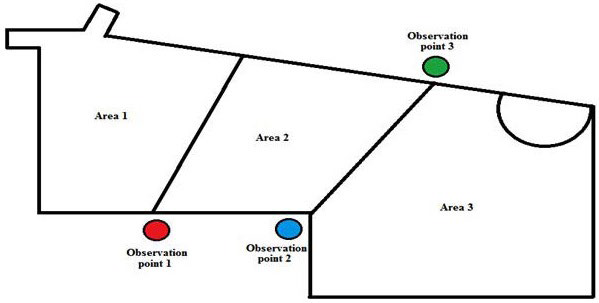
Quantitative observation data was assessed using an adapted version of McKenzie’s System for Observing Play and Leisure Activity in Youth (SOPLAY).30 A pilot study was conducted and the proforma was adapted to include tick boxes, activity codes (i.e., jumping games, ball games, chasing games, throwing games, etc.) and different sheets for each area. Observations were conducted on three separate occasions for a period of ten minutes for each of the three areas. Observations did not start until fifteen minutes into the school’s lunch period to allow children to relax into their activities. Systematic scans from left to right were conducted to identify and record the frequency of females and males engaging in sedentary, light or vigorous activities, supervision, equipment usage and the most prominent activity in each of the tarmac areas.
Qualitative data was collected after playtime via focus groups that allowed participants to express their own experiences, opinions and attitudes towards their PA participation and the use of playground equipment. Main themes relating to the aims of the research including playground activities, markings, supervision, weather, gender, design and equipment were identified (Figure 2). Themes where then used to create an interview guide, where each theme was divided into sub-themes and questions. Focus group interviews lasted ~15 minutes.
Figure 2. Focus Group Questioning Themes in Relation to Physical Activity in Primary School Playgrounds.
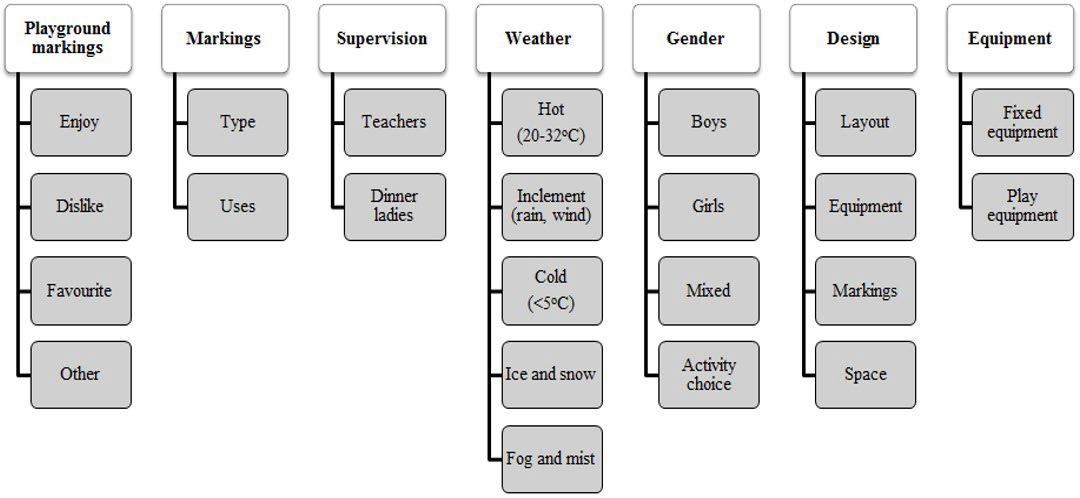
Data Analysis
Observation data included analysis of the mean values of females and males (MVPA) using paired sample t-tests. Focus group analysis involved transcription of the recorded interviews to gain scripted proof of the discussion. Additional breakdown and assessment of the data was through the use of a direct content analysis approach. Coding began in relation to predeter mined themes (Figure 2) and data that was not coded based on these themes, was analyzed later to see if they represent a new category. Once the transcript was produced, clear topics that were relevant to the research aims were highlighted using the scissor and sort technique.
RESULTS
Quantitative (Observation)
Results indicated that there was a significant difference (p<0.01) in sedentary activity between males (M=3.11±2.48) and females (F=1.85±2.10) with females having more sedentary behaviour than males. Additionally, monitoring levels of vigorous activity showed a significant difference (p<0.01) between males (M=3.76±2.22) and females (F=1.98±1.84) with males being more vigorously active. However, there was no significant difference in levels of moderate activity (p=0.59) between males (M=5.04±3.50) and females (F=5.41±4.24), suggesting minimal difference in the number of males and females that were moderately active. Similar results were observed in previous studies including Morgan et al32 and Parrish et al8 where boys engaged in more moderate-to-vigorous PA than girls.
Playtime Physical Activity Levels Across the Tarmac AreaArea 1
Results indicated that there was a significant difference (p=0.01) between male sedentary (M=1.28±1.27) and female sedentary (F=2.44±1.72). These results suggest that female participants in area one were more sedentary than male participants as illustrated in Figure 3.
Figure 3. The Number of Male and Female Participants and their level of Physical Activity Observed in Area One, during each Observation over a Ten Minute Period.
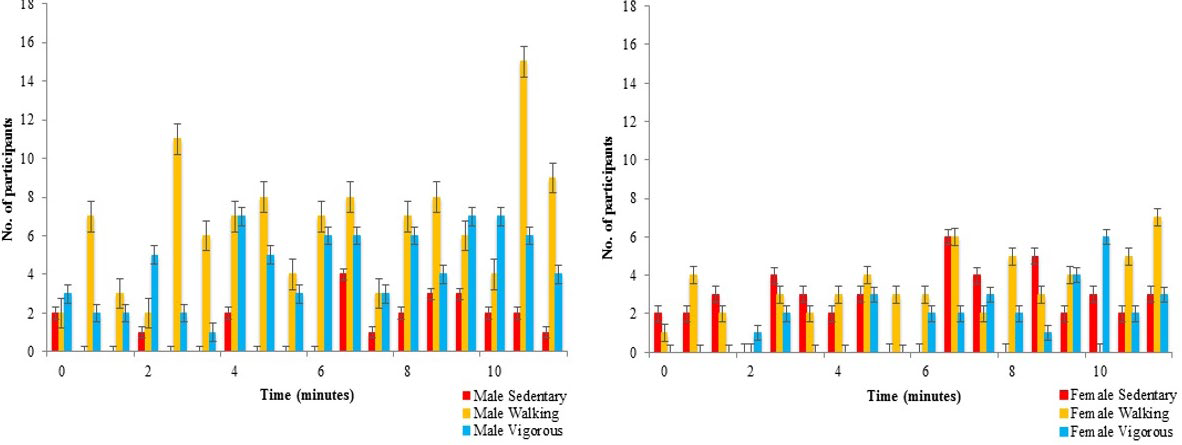
Additionally, there was also a significant difference (p<0.01) between male walk (M=6.50±3.29) and female walk (F=3.17±1.89), suggesting that male participants were more moderately active (walking) than females. Finally, there was a significant difference (p<0.01) between male vigorous (M=4.39±1.98) and female vigorous (F=1.72±1.67), suggesting that male participants were more vigorously active than female participants in area one.
Playtime Physical Activity Levels Across the Tarmac Area-Area 2
There was not a significant difference (p=0.06) between male sedentary (M=1.17±1.04) and female sedentary (M=1.94±1.31) PA. This can be observed in Figure 4, where the total number of female participants observed as sedentary was slighter higher than males (n=35 and n=21), showing a relationship but not a significant difference.
Figure 4. The Number of Male and Female Participants and their Level of Physical Activity Observed in Area Two, during each Observation Over a Ten Minute Period.
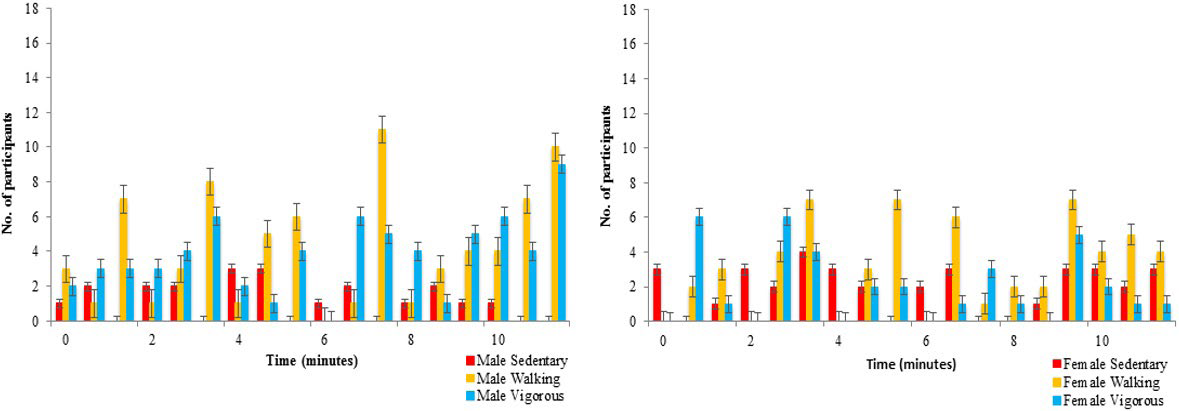
Moreover, there was not a significant difference (p=0.20) between male walk (M=4.22±3.32) and female walk (F=3.17±2.50), suggesting that there is not a clear difference in the number of participant’s that were engaged in moderate activity. However, there was a significant difference (p<0.01) between male vigorous (M=3.78±2.21) and female vigorous (M=1.94±2.04), which suggests that male participants were more vigorously active in area two than female participants.
Playtime Physical Activity Levels Across the Tarmac Area-Area 3
Firstly, there was a significant difference (p=0.05) between for male sedentary (M=3.11±2.91) and female sedentary (M=4.94±3.00), suggesting that female participants are more sedentary than male participants. Secondly, there was a significant difference (p<0.01) between male walk (M=6.50±3.57) and female walk (F=9.89±3.57), which is suggestive of male participants engaging in less moderate (walking) activity than female participants. Figure 5 exhibits this as n=117 males were observed as walking compared to n=178 females. However, there was not a significant difference (p=0.16) between male (M=3.11±2.40) and female (F=2.28±1.84) vigorous activity scores, suggesting that there was not a clear difference in male and female participants engaging in vigorous activity.
Figure 5. The Number of Male and Female Participants and their Level of Physical Activity Observed in Area Three, during each Observation Over a Ten Minute Period.

In summary, area one indicated there was a significant difference (p<0.01) between male (M=4.06±3.15) and female (F=2.44±1.83) overall activity levels, with males being more active than females. However, in area two there was not a significant difference (p=0.07) between males (M=3.06±2.70) and females (F=2.35±2.06) overall activity levels, although there may have been a relationship, with males being slightly more active. Finally, in area three there was a significant difference (p=0.01) between males (M=4.24±3.35) and females (F=5.70±4.33) overall activity levels, suggesting that males were more active than females in this area. Additionally inspecting Figures 3, 4 and 5, participant numbers were higher in area three compared to area one suggesting that a large number of pupils prefer being active in area three. This may be due to its variety of open spaces, landscape changes and equipment availability.22
Qualitative (Focus Group)
Gender differences: Males were identified to have engaged in more vigorous activity and females more sedentary activity during lunchtime. These results support previous findings where males engaged in more activity than females10,31 and contradict those of32,33 student views supported the observation results as they identified that boys appeared to be more active than girls:
“Boys run around more” (participant 11)
“Boys more than girls” (participant 15)
“We exercise more than girls” (participant 16)
“The girls are lazy they don’t run or exercise” (participant 13)
Differences between males and females in the level of PA engagement across each area were observed. Males were seen to be more significantly active in area one than in area two (p=0.04) however, there was no significant difference between female activity between areas one and two (p=0.77). Furthermore, both males and females were significantly more active in area three than in area two (p=0.01 and (p<0.01) and females were significantly more active in area three than area one These results suggest that area two was the least active area for males and area three was the most active for females. However, both areas one and two were equally inactive for females and areas one and three were equally active for males. Parrish et al8 highlighted that it is important to gain an understanding of why female’s activity levels are lower than males. During the focus groups, students had mixed responses in relation to whom they played with:
“A bit of both” (participants 1, 3 and 16)
“I like playing with the boys then again I do like playing with girls too” (participant 4)
“Because we play football, a few of the girls play with us but it’s mostly boys” (participant 7)
“Boys” (participant 13 and 15)
What is evident is that males and females not only played with different people but also engaged in different activities. Predominantly boys engaged in activities that were seen as moderateto-vigorous whilst girls engaged in more sedentary activities:
“Sometimes we do like adventurous games, but we do like girly chats and stuff” (participant 2)
“The boys play action games, girls just like walking around” (participant 1)
“Girls like drawing, talking, fussing with their hair and gossiping” (participants 5, 7 and 8)
“We run around more than them, they play ponies and dandy games” (participant 6)
“Making up a dance, skipping and involve handstands and cartwheels” (participant 11)
Results of the focus group are similar to previous studies by Hands et al34 and Pellegrini et al20 where they identified that males engaged in more chasing and ball games while females enjoyed jumping or verbal games. During the focus groups males enjoyed football and running around and females enjoyed more sedentary activities such as talking and walking around. Although, it was suggested that girls felt restricted from joining certain activities such as football where they ended up on the side line, due to fear of injury and instead would prefer separate areas.
“I don’t like that we don’t go in, especially the younger ones as they don’t like it” (participant 12)
“A separate part for girls and a separate part for boys” (participant 7 and 10)
“Boys could go play football on the field” (participant 12)
Paechter and Clarke21 observed similar results, where they identified that girls were more engaged and hence more active when they were on open spaces without being pushed to the side by boys’ dominating games such as football. Participant numbers were higher in area three, supporting the results of Paechter and Clarke,21 where pupils preferred the open spaces, landscape changes and equipment availability.
Equipment usage: A variety of studies have reported increased engagement in PA as a result of introduction of equipment.21,35 Ridgers et al,23 identified equipment availability as a positive predictor of moderate PA and a negative predictor of sedentary activity. Findings from the current study indicated that area one (which contained aeroplane themed climbing equipment) found 19% of participants were sedentary and 31% were vigorously active. Area two (that had no equipment and just a sheltered seating area) also reported 19% sedentary behaviour and 35% of participants being vigorously active. However, area three (which had a large cobbled area and trim trail) reported that highest percentage of participants (54%) being moderately active (walking) compared to 18% being vigorously active. Overall area three was predominantly used by younger pupils that use more fixed and non-fixed equipment and hence engage in moderate level activity, whereas areas one and two are used by older pupils in chasing and ball game activities and hence engage in more vigorous activity. This is further highlighted throughout the focus group discussions, where students identified that fixed equipment where an opportunity to engage and socialise with friends:
“The slide you can go like go down with other people and it’s really fun” (participant 16)
“The slide because you go down all different ways” (participant 14)
“I think we are a lucky school with the plane; it’s really fun to climb and drive” (participant 15)
A study by Parrish et al8 reported that non-fixed equipment created a more cohesive playground environment and had the potential to prevent bullying. However, the current study does not support Parrish et al8 findings, as fixed play equipment was viewed to relieve boredom and participants reported little interest in non-fixed equipment other than footballs. One possible reason for this is that the school had limited supplies of equipment or the method of using equipment was not efficient in encouraging children to use it. Furthermore, the focus groups were conducted with pupils from years three-to-six and potentially the younger children used non-fixed equipment whereas older children preferred the fixed equipment such as the aeroplane and trim trail. Participants claimed that to increase their PA, equipment suggestions could be:
“It would be good if we were allowed like the rounder’s posts out and then we could go on the field and we can all play rounder’s” (participant 3)
“Maybe like a roundabout, where you could hold onto poles and maybe you could sit in the middle or something” (participant 4)
“We could have little swings for younger ones and big swings for us and we could have a roundabout that would be quite nice” (participant 7)
“I would like it more if there were more slides” (participant 11)
“The best thing would be more footballs” (participant 13)
As described in a study by Verstraete et al,24 providing suitable equipment is seen as an effective, low cost method to increase children’s PA. Therefore, providing more footballs or rounder’s posts may act to increase moderate intensity activity. Additionally, Willenberg et al35 found that children engaged in vigorous PA when they were provided loose equipment such as footballs, however, not all children identified football as enjoyable:
“I hate football” (participant 12 and 16)
“I see all the boys playing football and I feel like it’s going to go right in my eye and hurt they don’t let us in sometimes we just stand there” (participant 10)
Finally, health and safety policies may prevent schools from providing swings and additional slides, as this requires risk assessments and additional supervisor training.35
Staff supervision: Results on the impact of staff supervision on children’s PA levels during playtime indicated that supervisors had implemented activities such as skipping and jumping, although this involvement was only reported on four occasions. This limited engagement is therefore not significant enough to be considered reliable. During the focus groups participants explained that you can play with them but they tend to help younger pupils:
“Sometimes they do help play with things like the skipping ropes and stuff with the little kids” (participant 2)
“Sometimes we play with the supervisors but sometimes we play by ourselves” (participant 10)
“If a child doesn’t have someone to play with they can go over and get involved in their game” (participant 8)
These findings concur with Ridgers et al23 report where there was no change in the level of PA as staff were not responsible for the implementation of activities. Instead they allowed children free choice over what activities to engage in. Playground supervision did not appear to significantly affect pupils’ activity levels. This may be because pupils identified that lunchtime supervisors are responsible for safety and not helping with activities:
“To look after us and stop incidents happening” (participant 7)
“Keeping you safe, first aid” (participant 9)
“They’re there to help and look after you” (participant 16)
“If there is an emergency they’ll be straight there” (participant 1)
As pupils reported that supervision would not encourage them, results contradict those of Parrish et al8 where twenty-one pupils reported that teacher interactions would encourage them:
“We wouldn’t play as much if they played” (participant 16)
“No we wouldn’t, I just like talking to them but not playing” (participant 4)
These results are similar to that of Parrish et al18 as there were no reported significant benefits if they encouraged children. However, neither study asked supervisors about their knowledge and level of interaction whilst on duty. Overall, results highlighted that lunchtime supervisors are important for health and safety. However, due to size of the play area and only two or three supervisors at one time they do not impact upon PA levels.
Weather: As previously highlighted, the influence of environmental conditions such as the weather on PA is evident.30 Studies by Chan et al25 and Goodman et al29 have reported that children that are outdoors display greater levels of PA compared to when indoors. Results from the current study reports similar findings as participants explain that when they have to come into the village square (indoor area) they are less active due to increased noise, smaller spaces, lack of activities and lack of freedom:
“When it’s raining really heavily we normally go into the village square and it’s really boring” (participant 10)
“When you’re out there (points to playground) you get all the freedom and then in the village square it’s only like a tiny space” (participant 12)
“We can’t do much because we can’t play football because the little ones will get hurt” (participant 7)
“We can sit outside the village square in the hall, in the corridor and then we can like read books and talk” (participant 2)
“We don’t get as much to do as the shed but like we can get board games sometimes and sit and play them” (participant 12)
“We don’t have as much freedom” (participant 13)
Results of the focus groups describe participants when they are inside due to rain they are less active and engage activities such as reading or talking. As there is little space to play with equipment these findings echoes safety concerns results by Chan et al.25 However, participants described when it was colder (<5 °C) or hotter (20-32 °C) than usual, their PA levels varied:
“When it’s really hot some people usually sunbathe, we do massages and stuff” (participant 3)
“It’s good when it’s hot because then the footballers get to go on the field and run around” (participant 4)
“It depends but if it’s hot you’re not very active as you sweat” (participant 8)
“If it’s cold we run around more” (participant 16)
“It goes cold and you’re like… and you can’t run around anymore because you can’t even move it’s so cold” (participant 12)
Similar to that of Huang and Volpe,36 during winter days when the temperature was colder, children were reported to spend significantly less time being active. This was often due to having shorter daylight days suggesting children engaged in 9% less activity in winter.36 On the other hand, when it’s hot, participants reported being less active and engaging in more sedentary activities to prevent sweating. This contradicts results from Loucaides et al37 as participants did not always report being more active in summer months, when it is hotter. However, this does not apply to all participants as some enjoyed the freedom to playing the field – a larger space, during the summer months.
CONCLUSION
The current research study aimed to explore children’s PA levels during school lunchtimes through a mixed methods approach combining observations and focus groups. Using an adapted version of McKenzie’s30 SOPLAY provided a systematic way to observe and analyze PA levels of a large number of participants across the 3 tarmac areas. Additionally, the use of focus groups allowed the exploration of how pupils feel their PA levels could be increased building on recommendations from previous studies.8,13
Results found that males were significantly more active in area one than area two (p=0.04) and females were significantly more active in area three than area one (p<0.01) Both males and females were significantly more active in area three than in area two (p=0.01 and (p<0.01) . Overall males were observed to have higher levels of PA during the study, supporting previous studies by Morgan et al.31 Parrish et al8 and contradicting those of Mota et al33 and Santos et al.38 The impact staff/teacher supervision had upon children’s PA was also investigated. Whilst Parrish et al8 reported that teacher interactions encourage PA the current study reported a limited number of observations where supervisors implemented activities during lunchtimes, through focus group discussions, it became evident that pupils viewed lunchtime supervisors as important for health and safety but rarely encouraged PA. It was also evident that the weather had an impact on PA, where participants claimed that they were less active when it was hotter, supporting Huang and Volpe36 but contradicting results by Loucaides et al.37 The study identified how playground PA may contribute to the guidelines of sixty minutes activity per day, with the SOPLAY adapted proforma, but did not directly measure the entire lunchtime. Future studies should further explore the impact supervisors have on lunchtime PA and developing schemes to improve PA without sacrificing health and safety.
Overall the research study has highlighted how PA promotion during lunchtime can encourage children to be physically active and contribute to a child’s daily activity levels and health, reducing the risk of becoming overweight or obese.20,21,39 Furthermore, it has provided an insight into what children feel will make them more active, positive predictors were equipment and different sections whilst negative predictors were supervision and weather. As a result of the current study and previous studies that identified females to have lower PA levels than males2,5,8,28 continued investigation into the reason for the lack of activity and further analysis on factors that may encourage their PA is needed. Throughout the focus groups a playground leader’s scheme was highlighted.36 Although a large number of the pupils were involved it was apparent that those pupils were not engaged with the initiative, therefore, future studies should identify the aims of the initiative and how pupils can be involved to develop their PA and leadership skills. Finally, as staff/teacher supervision was seen as a negative predictor of PA future studies should further explore the impact supervisors have on lunchtime PA building on the current study as results from Ridgers et al23 and Parrish et al.8 Looking at supervisor’s knowledge and developing schemes to improve PA without sacrificing health and safety.
CONFLICTS OF INTEREST
The authors declare that they have no conflicts of interest.







